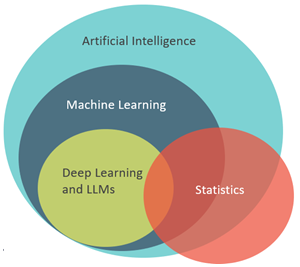
Key insights
- While there are pros and cons, it’s beneficial for government officials to know about AI and automation and its possible uses.
- Common ways to use business intelligence tools include budget reporting, accounts payable processing, and tracking credit card transactions.
- Using approved large language models may help both employees and constituents obtain correct answers to questions.
Looking to save time and resources? Explore AI and automation.
There is significant interest and varying opinions on automation and artificial intelligence (AI). While some believe AI will take us to the next industrial revolution, others believe it’s overhyped and will not produce change.
Adding to the confusion are the various interpretations around AI, leaving additional doubt about the safety and effectiveness of this technology advancement.
While there are pros and cons, it’s prudent for government officials to know about AI and automation and its possible uses. Learn how the technology may benefit government entities and review real-world examples.
What is artificial intelligence and automation?
Artificial intelligence
Setting a foundation of understanding is important when discussing various AI technologies. AI is a broad area of computer science focused on creating machines capable of performing tasks requiring human intelligence. It encompasses a wide range of techniques and methodologies enabling machines to perceive, understand, act, and learn from data and their environment.
Within AI are subsets focusing on specific data or outcomes:
- Machine learning focuses largely on algorithms that learn from data.
- Deep learning — incorporated within machine learning — delves into the neural network-based algorithms for complex data tasks. This is commonly referred to as a large language model (LLM).
- An LLM is a very focused AI tool used to specifically address a particular business use case (see an example below).
All AI has a foundational reliance on statistics, a key component in data analysis and algorithm training.

Automation
Automation uses technology — such as AI and business intelligence tools — to reduce human intervention. Automation does not replace human value, but rather increases human efficiency and enables people to perform higher-value tasks while still maintaining foundational knowledge of the automated task.
There are advantages to using AI and automation. Consider the following benefits and impact on automated reporting:
| Manual reporting | Automated reporting |
|---|---|
| 80% of reporting is ad hoc, 20% standardized | 80% standardized, 20% ad hoc |
| Time consuming | Time saving |
| Error prone | More accurate |
| Inconsistent | Real time |
| Dependent on individuals | Scalable |
Real-world use cases for AI and automation
Common ways to use business intelligence include:
- Budget reporting — Having an automated ability to review your budget, budget-to-actual, expenditures, and even geospatial review of expenditures not only saves preparation and review time but may also assist in your internal controls review.
- Credit and purchase card transaction data — Understanding trends and mitigating fraud risk can be obtained with robust bank data in an easy to automate and consume dashboard.
- Accounts payable processing — Using computer vision, technology can not only read characters on a document but can understand the document context and prepare data from invoices, receipt, and purchase orders for automated entry to your financial system.
Large language model examples
Applying LLM to your policies, procedures, ordinances, and legal documentation can provide tremendous time savings for your internal resources and the constituents you serve.
How LLM may help employees
Having a secure, internal-facing LLM — such as a company GPT — can allow employees to ask questions, provide scenarios, and obtain a conversational answer along with its source. For example, what if an employee wanted to better understand your travel policy? Using an internal LLM, the employee could quickly learn the per diem rates, how to log time, and how to submit expenses.
How LLM may help constituents
Using an LLM focused on local ordinances, building codes, and other important municipal resources can allow constituents to conveniently obtain a cited answer. It can provide a true 24/7/365 automated source, and you can gather insights on what’s important to the community (or what needs to be better communicated).
How we can help
Properly harnessed, technology and data reveal deep insight into your organization and can help save time.
Our digital team has deep experience in data, data analytics, and data science. Contact us to learn how automation and AI may help your organization.
Contact us
Looking to save time and resources? Explore AI and automation. Complete the form below to connect with CLA.
If you are unable to see the form below, please complete your submission here.
